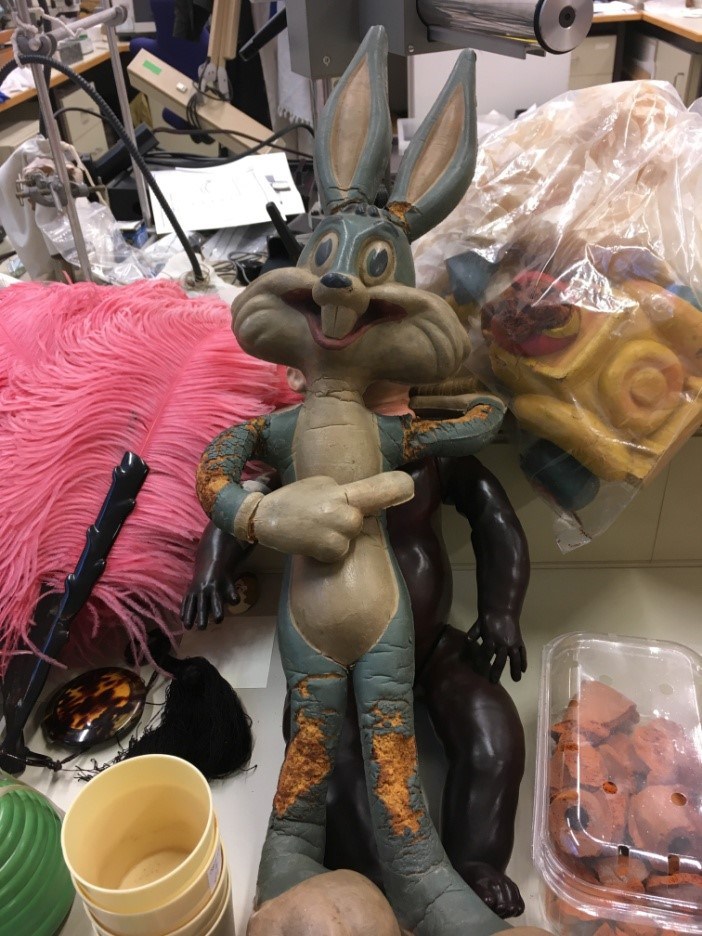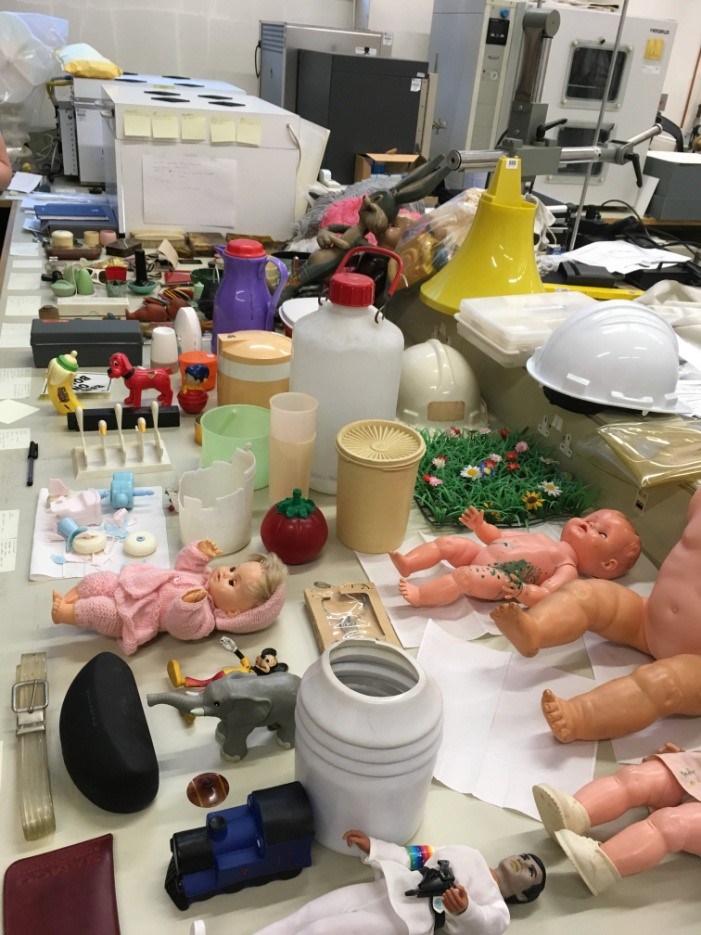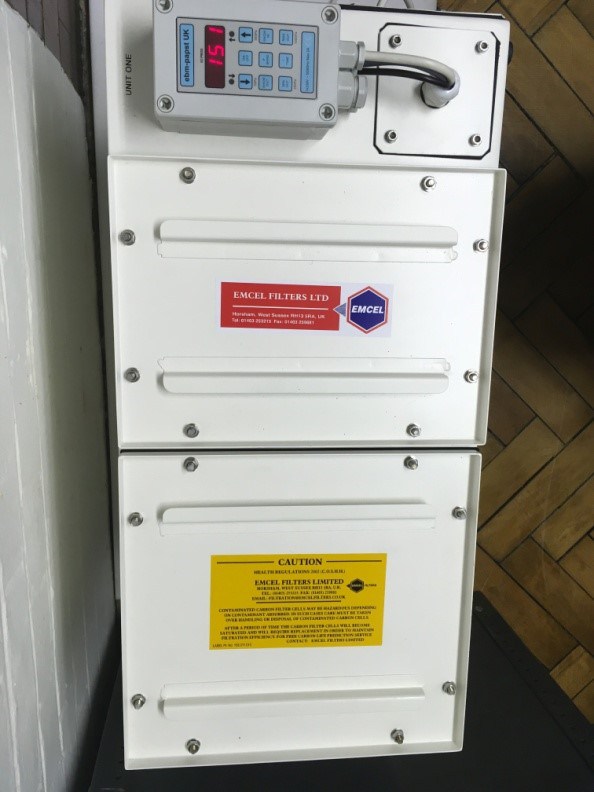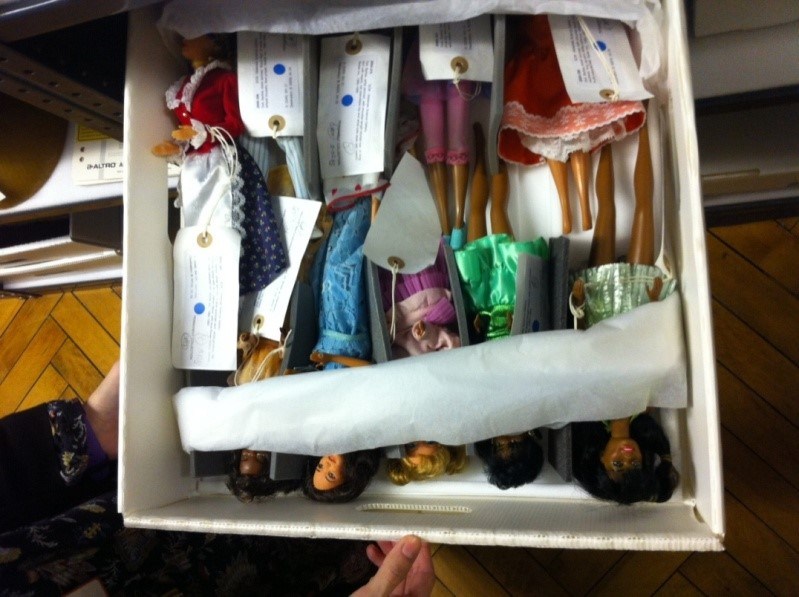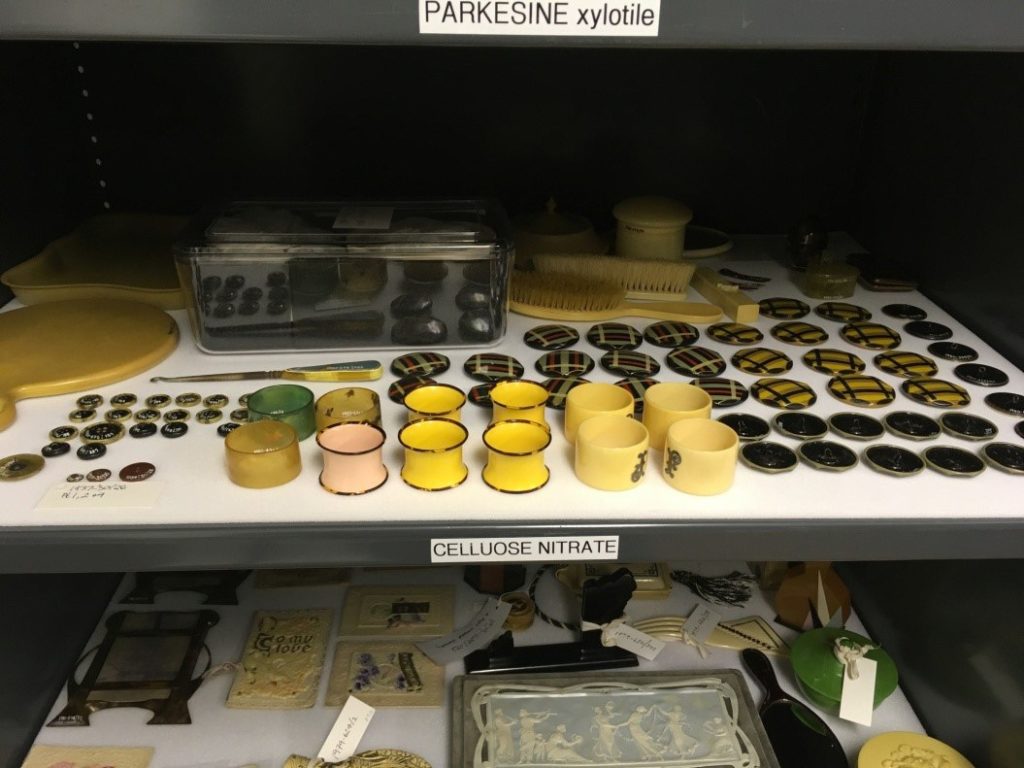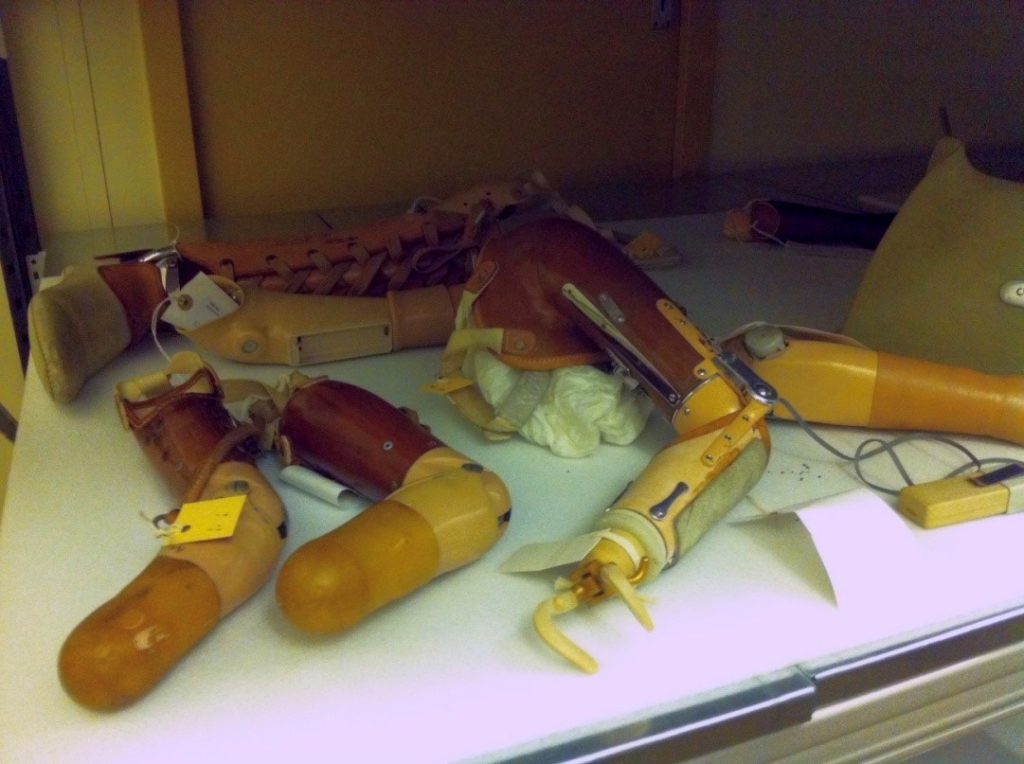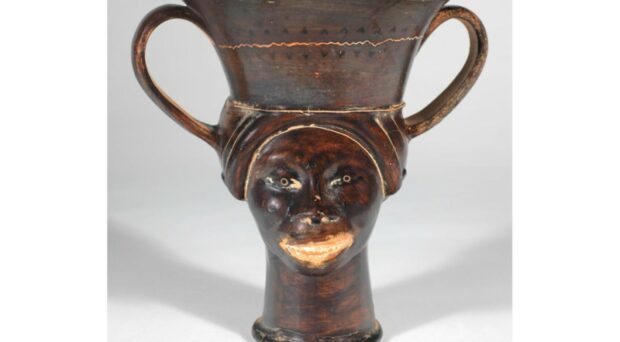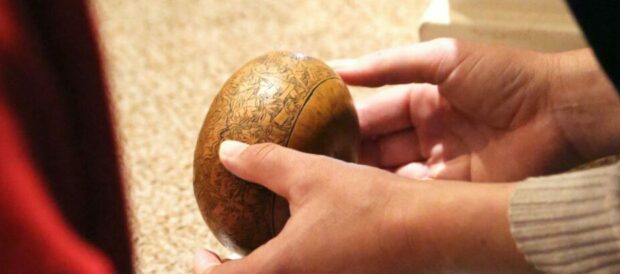Plastic is so much part of our lives that we don’t really think about it, but many people are still surprised to learn that there is now quite a lot of plastic in museum collections. Many objects from the late nineteenth century onwards contain plastics, from artworks to scientific instruments, clothes, toys and household items. Unfortunately some plastics are very unstable and degrade rapidly, often giving out acid which damages other things nearby. This is a growing problem for museums, and there is still a lot of work needed to develop solutions and preserve these objects effectively.
Between them, the University of Cambridge Museums own 2500-3000 objects containing plastics, and this number is growing as new things are acquired. So conservators and collections managers in the museums have joined forces and are learning as much as we can about how to tackle the plastic problem. Here are some tricky examples from the Polar Museum.

Recently we visited 4 museums in London where they have been researching and experimenting with plastics conservation for some years, to see what tips we could learn from them. In a hectic two days we visited the stores of the Museum of London, V&A, Science Museum and British Museum, and talked to their plastics specialists. All the people we spoke to gave us a great welcome and were very generous with their time and their knowledge.
The word “plastic” refers to dozens of different chemicals, and there are dozens more additives that can be used with them, from colours and fillers to preservatives and plasticisers. Knowing what a plastic object is made from is crucial to working out whether it is likely to be unstable, and how to preserve it. Although there are so many possibilities, there are only 5 types of plastic which are a major cause for concern in museum collections: rubber, PVC, cellulose acetate, cellulose nitrate and polyurethane. Any conservation plan therefore has to start with identifying what type of plastic is present in an artefact.
Identifying plastics is quite easy if you have a Fourier Transform Infrared Spectrometer (FTIR), but unfortunately these are expensive and lots of museums don’t have access to one. So the V&A are working on improved ways to identify plastics without expensive analytical machines. Traditional non-analytical methods of identifying plastic include burning little bits and deciding what they smell like, or what the flame looks like! Not surprisingly this isn’t really an option for museum objects….
We met Brenda Keneghan, V&A Polymer Scientist and her postgraduate intern Carien van Aubel who showed us the fantastic range of plastic objects which they use for testing – here are just a few of them.
These things are similar to items in the V&A collections but none of them are museum objects so they can be heartily abused for research purposes! Brenda and Carien are using them to develop an “identification decision tree” using characteristics like appearance, hardness, smell, date, manufacturing information etc. This can give remarkably good results, and the V&A will start offering training in their methods in May next year. An affordable alternative to FTIR will certainly be very welcome.
At the Museum of London we met Abby Moore, who in partnership with colleagues from the Courtauld Institute of Art and UCL Institute for Sustainable Heritage was shortlisted for an ICON Conservation Award for her work with the Museum’s 20th century handbag collection. We learnt a lot of valuable things about how Abby approached identifying the plastics in this group of objects, some of which had more than one type of plastic on them. Abby compared her findings with other museums and had a lot of useful practical tips for identifying and surveying plastic using FTIR, and interpreting the different types of data she collected. She also showed us some of the gorgeous handbags in the store. Here is Abby (in the blue gloves) explaining more about her project to the University of Cambridge Museums group.

We also visited the Science Museum and British Museum stores at Blythe House behind Olympia. This mammoth building used to be the headquarters of the Post Office Savings Bank, and currently houses off-site storage for the British Museum, Science Museum and V&A. The size of some of the storage rooms is awe-inspiring:
In the Science Museum section, conservator Fabiana Portoni showed us their nifty dynamic ventilation units that contain activated charcoal to absorb acids given off by degrading plastic in one specialist store room. With any luck this will keep the dolls in the collection happy (in case you are wondering why the Science Museum has dolls at all, they were prototype versions made to test new plastics for toys).
In the specialist plastics store different types of plastics are kept together on labelled shelves to make it easier to keep track of any problems which might develop.
Some objects contain more than one type of material and this is a challenge when the different parts need different conditions to preserve them. This is a particular problem for many objects in the Science Museum prosthetics store – these examples have leather, metal, wood and plastic all together in the same artefact.
In the British Museum section, conservator Nicole Rode showed us different types of controlled micro-environments which can help to slow down degradation. For example, they have oxygen free bags for rubber objects, which inhibit oxidation (the process which makes rubber go hard and crumbly). The objects are sealed in several layers of vapour barrier film and contain sachets of “Ageless” which scavenges all the oxygen out of the bag. A little pink indicator tablet is also in the package and changes colour if the oxygen levels go up.
They have also created freezer storage bags for a collection of shadow puppets made from cellulose nitrate. Cellulose nitrate is dramatic stuff as it gives off nitric acid when it deteriorates and famously (in the case of old cine film) can spontaneously combust as well! Either of these things is obviously a problem for the rest of the collection, as well as the object itself. Putting cellulose nitrate in the freezer slows the deterioration right down and also makes it safe for objects nearby.

They have also created freezer storage bags for a collection of shadow puppets made from cellulose nitrate. Cellulose nitrate is dramatic stuff as it gives off nitric acid when it deteriorates and famously (in the case of old cine film) can spontaneously combust as well! Either of these things is obviously a problem for the rest of the collection, as well as the object itself. Putting cellulose nitrate in the freezer slows the deterioration right down and also makes it safe for objects nearby.
Some objects are a challenge partly because of their size. Here is Nicole showing us a fabulous rickshaw in the British Museum collection.

The cover is made from PVC and the tyres are made from rubber – two materials which often need rather different storage conditions. Working out the best way to store and display it is an interesting challenge.
Brenda, Carien, Abby, Fabiana and Nicole all gave us plenty to go away and think about and it was really useful to hear their experiences first hand. We will be working on plastics a lot more over the next few years and will write more about how we get on, so watch this space!


